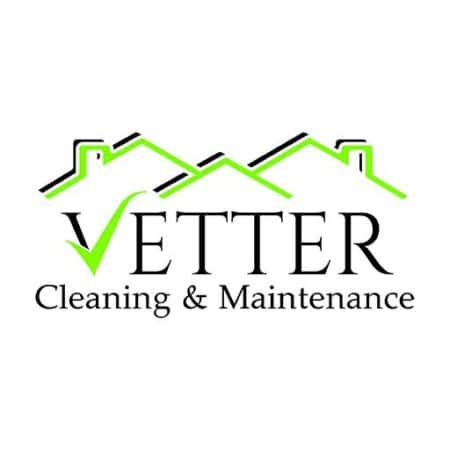Let’s talk about one of the most unwelcome guests that can show up at your home: mold. This category of fungus can appear anywhere where humidity and a lack of natural light become a frequent reality. For us in the Springs, right now during October we have some of the best conditions for mold. The weather is not too cold yet in most regions, and the weather conditions create a perfect feast for the fungus to spread, sometimes unnoticed.
Although mold is natural, it should always be addressed when found inside our homes. Besides the fact that it is an eyesore to any environment, some types of mold can be toxic and cause health issues, especially to people who are more sensitive to allergens or who struggle with breathing issues such as asthma.
But what exactly is mold?
What is Mold?
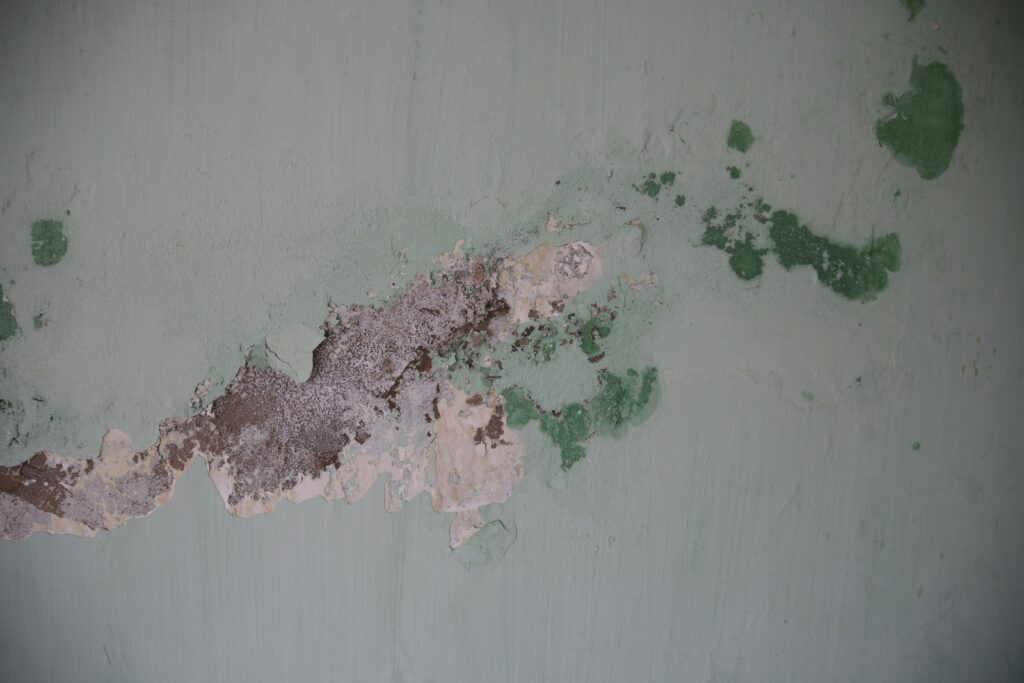
Like we said before, mold is a natural part of our environment. Scientifically speaking, mold is a type of fungus, just like mushrooms or yeast. It consists of tiny organisms that reproduce by releasing spores into the air, which can be found everywhere. Outdoors, they play an important part in nature by breaking down dead organic matter, such as fallen leaves and dead trees. Indoors though? Not so nice. Molds gradually destroy the things they grow on, which means damage to your house and belongings in the long run if you are constantly dealing with mold, besides the potential health problems.
What can mold grow on, you ask? Pretty much any organic material when moisture is present. That includes food, wood, paper, drywall, and even fabrics.
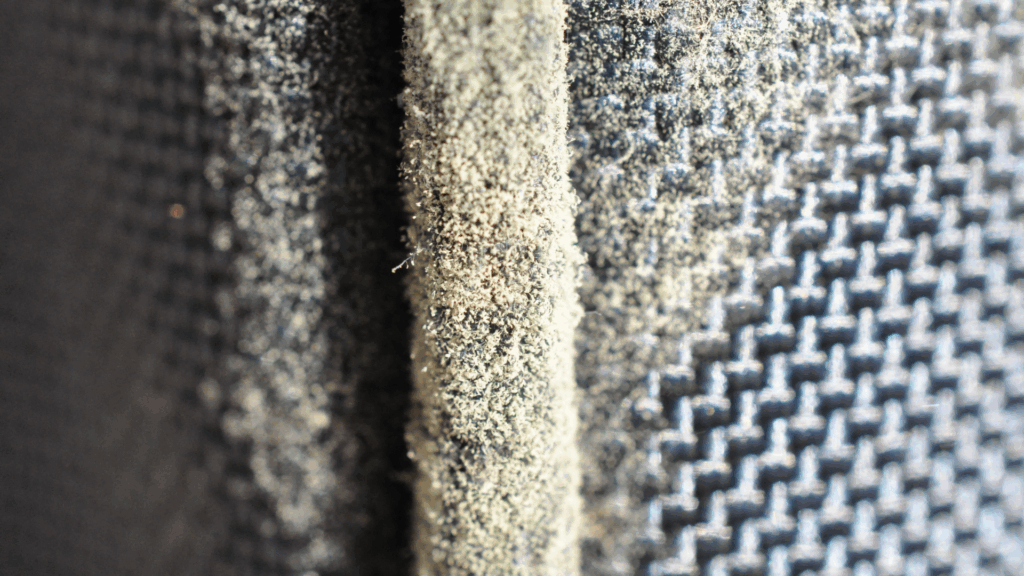
Like any other fungus, mold loves humidity. That means that in practice, controlling mold is about controlling moisture. According to the United States Environmental Agency (EPA) it is impossible to get rid of all mold since some mold spores will be found floating through the air and in house dust. BUT, if you can fix your water problem (or at least keep it at bay if you live in a very humid area), the situation becomes manageable. The mold spores will not grow if moisture is not present in the space.
Now, the real question is: how to clean mold properly? Anyone who has ever had to struggle with it knows that mold can be a tricky thing to address when cleaning your home. Especially because your approach needs to be different depending on what you are dealing with.
Cleaning mold from your clothes will require a different solution from cleaning mold from your walls, for example. On top of that, you might not even be able to tell that your home has mold, which gives more time for the infestation to grow.
How to tell if your house has mold?
When the growth is already advanced, the presence of mold is obvious, but that’s not the case all the time. Learn to look out for these signs of mold to prevent the problem before it grows!
1. Visual Signs
If you notice discoloration or spotting on your walls, ceilings, floors, or anywhere else, that’s a sign of growing mold. Mold can show up in many colors, such as green (what we usually see in spoiled food), white, orange, blue (the same organism used to make blue cheese and penicillin), purple, and black. The last one tends to generate some panic, but according to the EPA, not all black mold is toxic.
2. Smell
Another common indicator of hidden mold is the smell, which is usually musty and earthy. If a certain room in your home always smells damp, that’s a strong indicator that you have a mold problem, and likely a leak as well. It could be hidden under the carpet, behind old wallpaper, or in your HVAC system.
3. Water Damage
If you know your house has gone through any leaks or perhaps flooding, pay attention to it. You need to look after water stains, peeling paint or wallpaper, warping floors, or bulging walls. Remember: mold needs moisture to grow, so where you have a water problem, you will likely have mold, especially in the in-between seasons like Fall and Spring. If you are moving into a new house, consider hiring a move-in cleaning to guarantee your family’s new home will be free of mold and other problems.
4. Condensation
Perhaps your problem isn’t about a water leakage but with the climate itself. Persistent condensation on windows, pipes, or walls signals high humidity, which fosters mold growth. In this case, the best course of action is to increase your ventilation as much as possible, or consider using a dehumidifier – an electrical appliance that removes excess moisture from the air in a closed space. You will also need to prioritize the weekly cleaning with proper products to prevent mold from growing.
5. Health Symptoms
Picture this: you suffer from allergies or asthma, and your symptoms always seem to mysteriously improve after you leave your house for some days, only to get worse again after you come back. If that’s your case, then that’s another strong indicator of a mold problem indoors. Take some time to investigate your space, as mold is not always growing in the most visible spaces. If there’s any chance that it could be in your HVAC system, make sure to hire a professional team to address the situation properly.
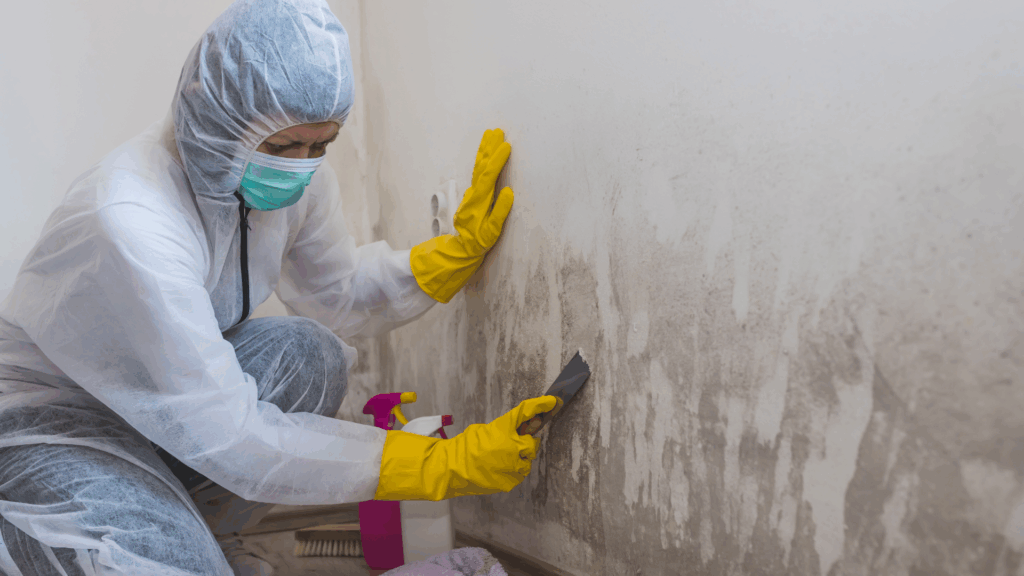
Now that you already know how to identify the problem, let’s get down to business and defeat the mold! Here are 5 tips to help you deal with mold effectively, safely, and for the long term. Ready? Let’s get to it!
1. Access the intensity of the infestation
The first step to getting rid of mold is to understand the real dimensions of your problem. Since mold loves darkness, stillness, and humidity, the most common hideouts are:
- Behind and under refrigerators, dishwashers, and washing machines;
- Under sinks and around plumbing fixtures;
- In attics, especially if roof ventilation is poor;
- In basements, due to the lack of natural light;
- Behind drywall or wallpaper if those faced water damage of any kind;
If you find a patch of mold that’s more than 10 square feet or if you suspect that your HVAC system might have been contaminated with mold (remember to pay attention to the smell), it’s time to start thinking about calling a professional.
2. Ventilate the area as much as possible
The second step to start cleaning mold is to ventilate your space as best as you can. Proper ventilation will reduce humidity and also remove moisture-laden air. That prevents mold from reproducing and growing. If you don’t have many windows where you live, try using a fan or other ventilation devices to help you while cleaning.
A good dose of fresh air will help you create a less hospitable environment for mold and will also prevent any problems you could have while using stronger cleaning products, such as bleach, for example. For more on that topic, read our previous article!
3. Protect yourself
Time to gear up! Like we said before, not all types of mold are toxic, but since some are, it’s better to be safe than sorry. Besides, if you are already sensitive to allergens or if the infestation is strong, even non-toxic mold can still cause irritation.
To protect yourself, you will need rubber gloves to avoid coming into too much contact with the mold and a mask. If the infestation is small, the simple kind we all used to wear to go to the grocery shop back during the pandemic will suffice. Now, if you are more sensitive, use a N95 respirator, which is available at hardware stores. This mask is designed to filter out at least 95% of airborne particles.
For larger jobs (full infestation after a big flood, for example), a half-face or full-face respirator with P100 filters could be a better option. Googles are another must have for when cleaning larger contaminated areas so you can avoid getting mold or its spores in your eyes.
4. Get rid of the extra humidity
Try to fix your water problem as soon as possible! Without addressing the moisture problem, mold will just come back even after you deep-clean it. Investigate to see if you have any plumbing leaks and other water problems that you need to fix, and dry all wet items completely. Doing this before you start applying cleaning products that are effective against mold will be the best way to prevent it from just reappearing after the cleaning.
If your problem isn’t inside your home but rather in the weather, then consider the tools we mentioned previously, such as a dehumidifier.
5. Prepare the right solution according to the type of surface
The way you are going to clean depends on what you are going to clean. Check it out:
Hard surfaces: For materials such as tiles and glass bleach can be very effective. However, beware! As we have stated in our previous blog post, bleach is one of the most reactive cleaning products out there, so do not mix it with other cleaning products. By doing so you risk creating toxic fumes due to the chemical reaction.
When using bleach, take no more than 1 cup of bleach in 1 gallon of water for the cleaning and ventilate the area well.
Absorbent or porous materials: For things like drywall, wood, ceiling tiles, and carpet, bleach is no longer a good option. That’s because it won’t penetrate the material properly, and since we are talking about a strong chemical, risking your stuff isn’t worth the shot. In this case, distilled white vinegar can be a better option, since its acidic nature can be pretty effective in killing mold, and it’s less abrasive. Apply it with a spray bottle, let it sit for at least an hour, then scrub and wipe clean.
However, if the problem has already spread over a large surface, you might just have to throw your carpet away. That’s because, according to the Environmental Protection Agency, mold can grow on or fill in the empty spaces and crevices of porous materials, so it may be difficult or impossible to remove it completely if it has already spread over a large area.
On the same note: do not paint or caulk moldy surfaces! Paint applied over moldy surfaces is likely to peel off, and you won’t fix the problem, you will just hide it (and waste money). Clean up the mold and dry the surfaces first before painting, and call a professional when needed.
Clothes: For clothing, the less abrasive the cleaning product is, the better. Here white vinegar or baking soda can do the trick for you alongside hot water and plenty of time to dry out, preferably in natural sunlight. There are also plenty of laundry products designed to remove mold off clothes so you can also give those a try if the situation can’t be resolved with a homemade recipe. Also, pay attention! Always follow the care label instructions of your clothes to prevent damage.
When to call a professional to clean mold?
We’re all for DIY, but some situations are just too complex and perhaps even dangerous to deal with by yourself. In times like this, hiring a professional is the best course of action. Work smarter, not harder!
You should consider calling a professional cleaning company with experience with mold if:
- The area affected by mold is larger than 10 square feet;
- You suspect your HVAC system is contaminated with mold.
- The mold was caused by contaminated water (broken pipe bringing sewage into the home or floodwater).
- You have tried to clean the area by yourself before but the mold keeps coming back. That usually indicates a hidden root problem that you can find or an inadequate use of cleaning products.
- You are part of the group of people who should not be exposed to mold due to health problems. According to the U.S Centers for Diease Control and Prevention, people who suffer from asthma, COPD, or are immune compromised should not stay in a moldy home, or even be there while it is being cleaned. If you belong to this groups, do not attempt to do the cleaning alone. Ask for the help of a professional!
Professionals such as our own will bring in the equipment, training, and experience to handle large-scale mold problems safely and effectively. Count on us!
Need help to get your home mold-free? Give us a call!

Here at Vetter Cleaning & Maintenance our main goal is to make your house fresh as new for you. We are ready to fight off mold, dander and whatever else comes our way! You can take a look at what we offer and the area of work to pick what works best for you! We work with a broad range of services – from weekly housekeeping with our professional technicians, to disinfecting and fogging packages. Invest in your life quality! Show your home the care it deserves.
Let’s keep the conversation going!
Thank you for reaching this far! Now tell us, have you battled mold in your home? What tips worked for you? Do you have a question we perhaps didn’t cover? Share with us in the comment section and let’s help each other keep our homes safe and mold-free!
Written by
Vetter Cleaning & Maintenance Team.
About the company
Vetter Cleaning is a professional cleaning service located in Colorado Springs, CO. They offer a variety of cleaning services to meet most residential cleaning needs, including recurring maid services, deep house cleaning services, and move-in/out cleaning services.
If you live in the Colorado Springs area, we invite you to request a free home cleaning quote.
Find us on Google!
